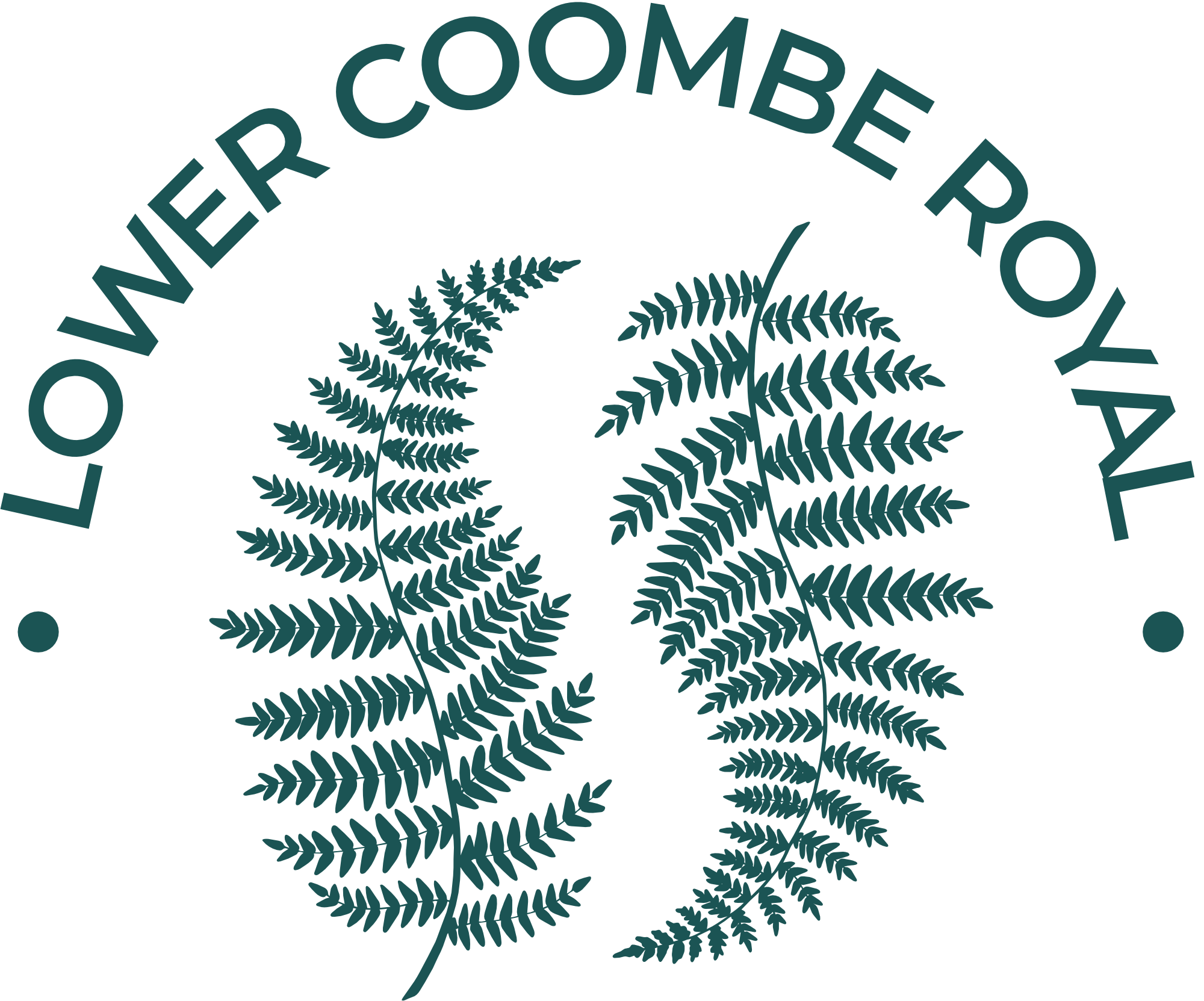History
History of the Lower Coombe Royal grounds
Renowned Gardens
Both Combe Royal and Lower Coombe Royal are renowned for their magnificent gardens. The American Garden at Lower Coombe Royal is first mentioned in an article in the Journal of Horticulture and Cottage Gardening. From this, it appears that it was laid out soon after 1840 by John Luscombe as an addition to the garden of his house, Combe Royal. He was an enthusiastic gardener who corresponded with Sir William Hooker at Kew and received seeds of rhododendrons and other plants from him. Among these were some of the first sikkim rhododendrons, brought from India by Sir William's son Joseph. John Luscombe was one of the first hybridisers of rhododendrons, and raised hybrids such as 'Luscombei', 'Combe Royal' and 'Luscombes Scarlet'. Rhododendron Fortunei, introduced in 1859, first flowered in this garden in 1866 and was illustrated in Curtis's Botanical Magazine in that year.
Another source for the plantings was the firm of Veitch. In 1977, Mr Alan Mitchell, of the forestry Commission Research Station at Alice Holt, visited the garden and measured the more notable trees. He reports that: "three conifers, Abies Firma and the vars, filifera and squarrosa of Chamaecyparis pisifera are the second biggest in the UK, and two broad leaved trees, Drimys winteri and Zelkova serrata [died 1985] are the largest - the only taller one being in Southern Ireland." All of these trees, except the Drimys, were the first to be introduced in 1861 by John Gould Veitch as a result of his expedition to Japan and China, and it seems probable, in view of their size, that they derive from this first introduction.
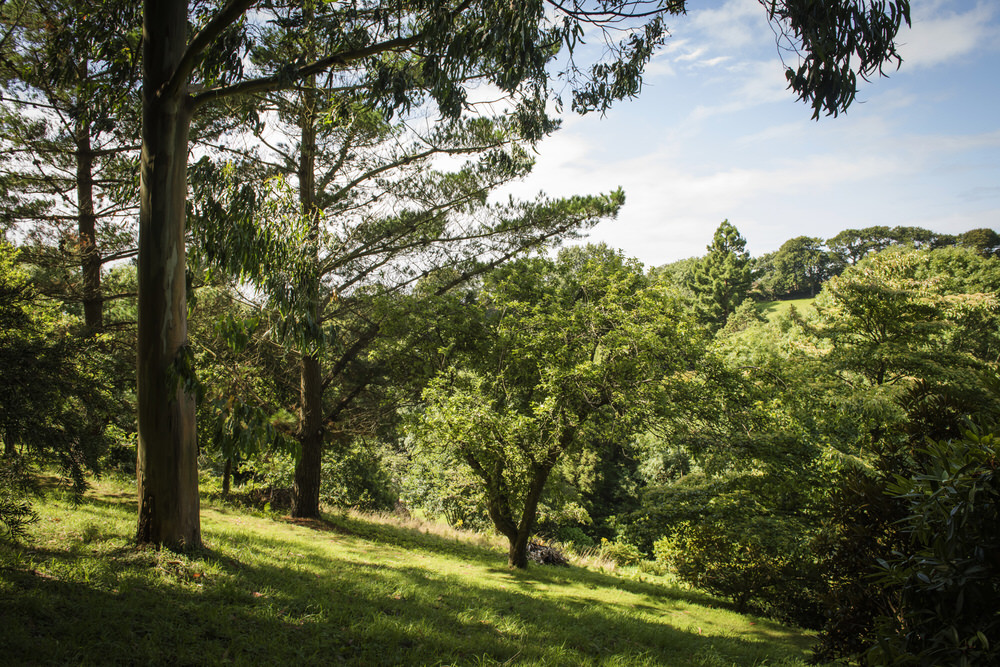
Luscombe's hybrids
Camellias
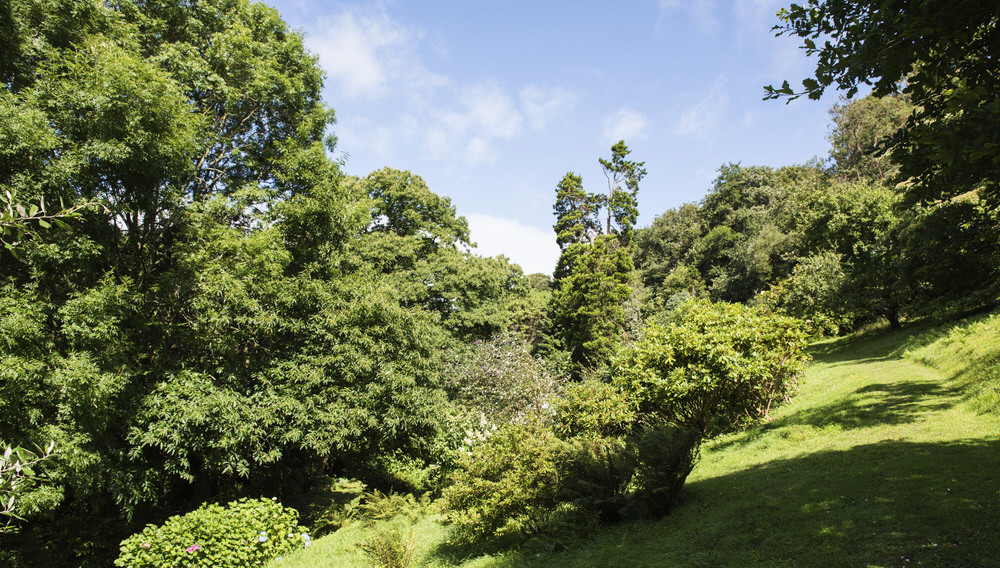
American Garden
It seems that the term 'American Garden' was first used about the time John Luscombe was starting his planting. It originally described areas used for the quantities of new plants being sent back from America by David Douglas, James McRea and William Lobb. Subsequently, many other plants with similar cultural requirements, a cool acid soil and informal treatment, came to be included in such plantings.
The American garden covers about two acres, long and narrow, at the bottom of a valley. It is sheltered from the wind, except to the south, but tends to be a frost-free pocket. Various established trees provide some top cover and others are being encouraged to extend this. The soil is a neutral to weakly acid stony clay-loam, derived from shale which lies close to the surface except in the bottom of the valley. Within the garden an acid peaty layer has developed on the surface beneath the rhododendrons.
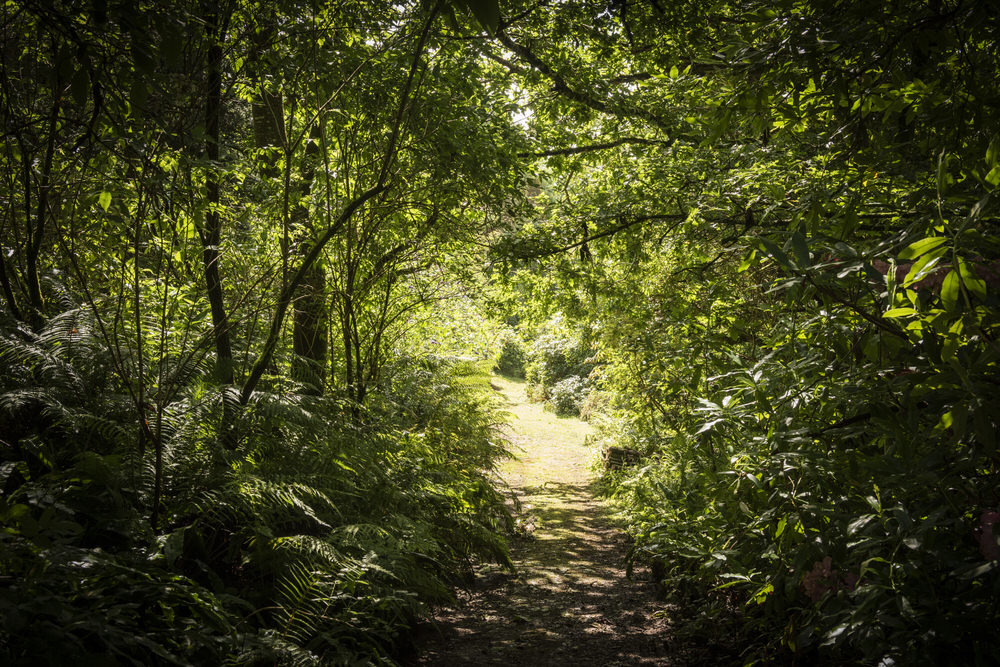
Australian hybrids
Among the camellias which have done well are the hybrids from New Zealand. This also includes several Australian hybrids including E G Waterhouse, Sayonara and Shocking Pink and Americans including Francie L, Gulio Nuccio, Hawaii, Reg Ragland and R L Wheeler. Classics such as Adolphe Audusson, Donckelarii, Lady Clare and Donation have also been planted as well as two of the Kumming Reticulatea Crimson Robe and Lionhead which flower successfully in the open. The new camellias overflowed into new areas, almost as large as the original, on the south slope of the valley; some are partially shaded but several are in full sun. These flower profusely and seem to suffer no ill effects, although their leaves are paler in colour that those in shadier situations.
Roger Bond Luscombe
The house at Lower Coombe Royal was built in 1914 by Roger Bond Luscombe who owned Combe Royal at the time. He found Combe Royal too big and literally decided to help in the building of Lower Coombe Royal. Sadly Mr Luscombe died two days before its completion.

